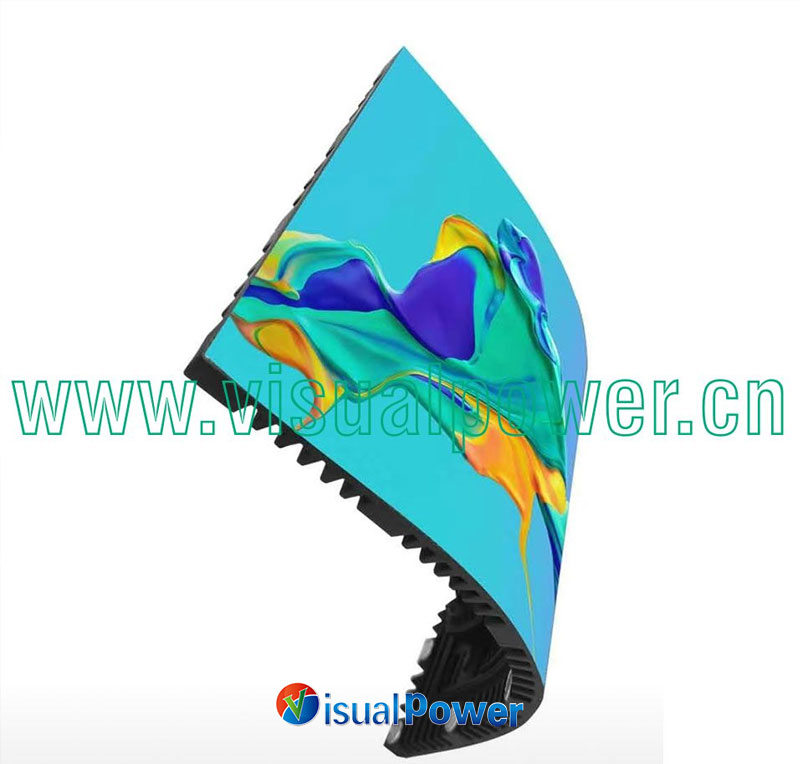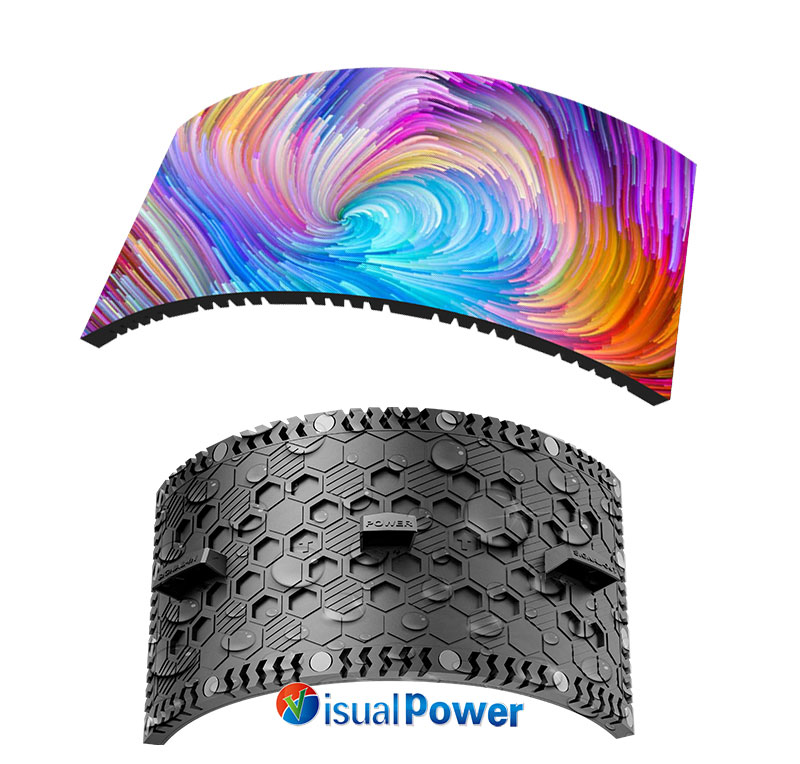Categories
- News (75)
- case study (6)
An unexpected observation of Flexible LED Display
By a person fascinated by the night of the city
I still remember that scene to this day: At a commercial street corner in Shanghai, night was falling and the cold wind was passing through the flickering glass Windows. The crowd was surging, but no one noticed the band of light slowly moving around the glass dome above their heads. I looked up for a few seconds and then realized that it wasn’t a light strip, but a whole circle of flexible LED screens – it seemed to be breathing, rhythmically changing colors, as if the heartbeat of the city was right before your eyes.
At that moment, I began to understand that the so-called “Flexible LED Display” is not just a screen that can be bent and rolled up; it is a way to redefine space.

If you think flexible LED screens are only for decoration, you might be underestimating them.
It is not merely a “bable” LED. Instead, it adopts a flexible substrate and thin packaging in its structure, enabling it to naturally adhere to cylinders, curved surfaces, and even be suspended like ribbons. And the change brought about by this is not a certain “functional upgrade”, but a change in context:
Previously, design gave way to technology.
Now, technology has finally caught up with imagination.
Ultimately, a flexible LED display screen, if it fails to blend in with your space, theme and mood, is merely a fancy appliance.
The projects that truly touch me are often not a matter of whether they shine or not, but rather “they show up when they should, and don’t make a fuss when they shouldn’t.”
For example:
• The meandering wall information belt in the museum guides all the way but never gets distracted.
• The curved LED imitating water ripples in the new media installation makes the audience forget its “physical existence” when they are immersed.
• For the first time, column advertisements in urban subway stations do not make people feel out of place or obstruct their view.
It is just like what light should be – lively, controllable and undisturbing.

I won’t talk about those engineering data anymore. Let me share my real feelings after using them:
1、It’s really light.
When you have seen two workers easily carry the entire module up and down the elevator for installation, you would know that this is not a “promotional slogan”.
2、The splicing is really flexible.
In the past, when installing regular screens, it was always necessary to calculate the Angle, seams and bending limitations. Nowadays, with flexible modules, basically only one flat point is needed for free bonding.
3、Brightness, color? Never let anyone down.
Even in a semi-open-air environment during the day, as long as the parameters are adjusted properly, it can still provide the impact force you desire. The key point is that it’s not dazzling and it’s “smart”.
Over the past few years, I have gradually realized that the greatest value of flexible leds does not lie in the “technological breakthrough” itself, but in the way it intervenes in space design.
Traditional screens are the boundaries of content, while flexible screens make content a part of the space.
It no longer requires a “background wall” or “installation point”. It can itself become the texture of the building, the creases of light, and the carrier of the story.
This reminds me of a project I have collaborated on: A hotel wanted to create a “gallery without frames”. Ultimately, they chose flexible leds with strong visual appeal and transformed the ceiling into a slowly rotating starry sky trajectory – not disturbing the guests but making everyone passing by willing to look up.

Don’t misunderstand. It’s not that it’s going to disappear. Instead, it will “blend in” more and more naturally.
We might soon see the dynamic weather on the curved billboards at the bus stops.
On the columns of the airport, one can see real-time flights and artworks coexisting.
Even do yoga, visit exhibitions or connect with relatives and friends on the deformable TV wall at home.
Flexible leds will not be the “main characters”; instead, they will become part of the environment – just like glass, wood and cement, a fundamental element of modern spatial language.
For me, it’s neither a cold accumulation of technical parameters nor a flashy exterior for showcasing creativity. It is an underestimated medium, an extender of urban expressions, and a driving force that enables design to move from two-dimensional to three-dimensional.
It reminds us that light can have shapes, information can have temperatures, and space can have emotions.
And as long as we dare to imagine, we will never be limited by the “plane”.